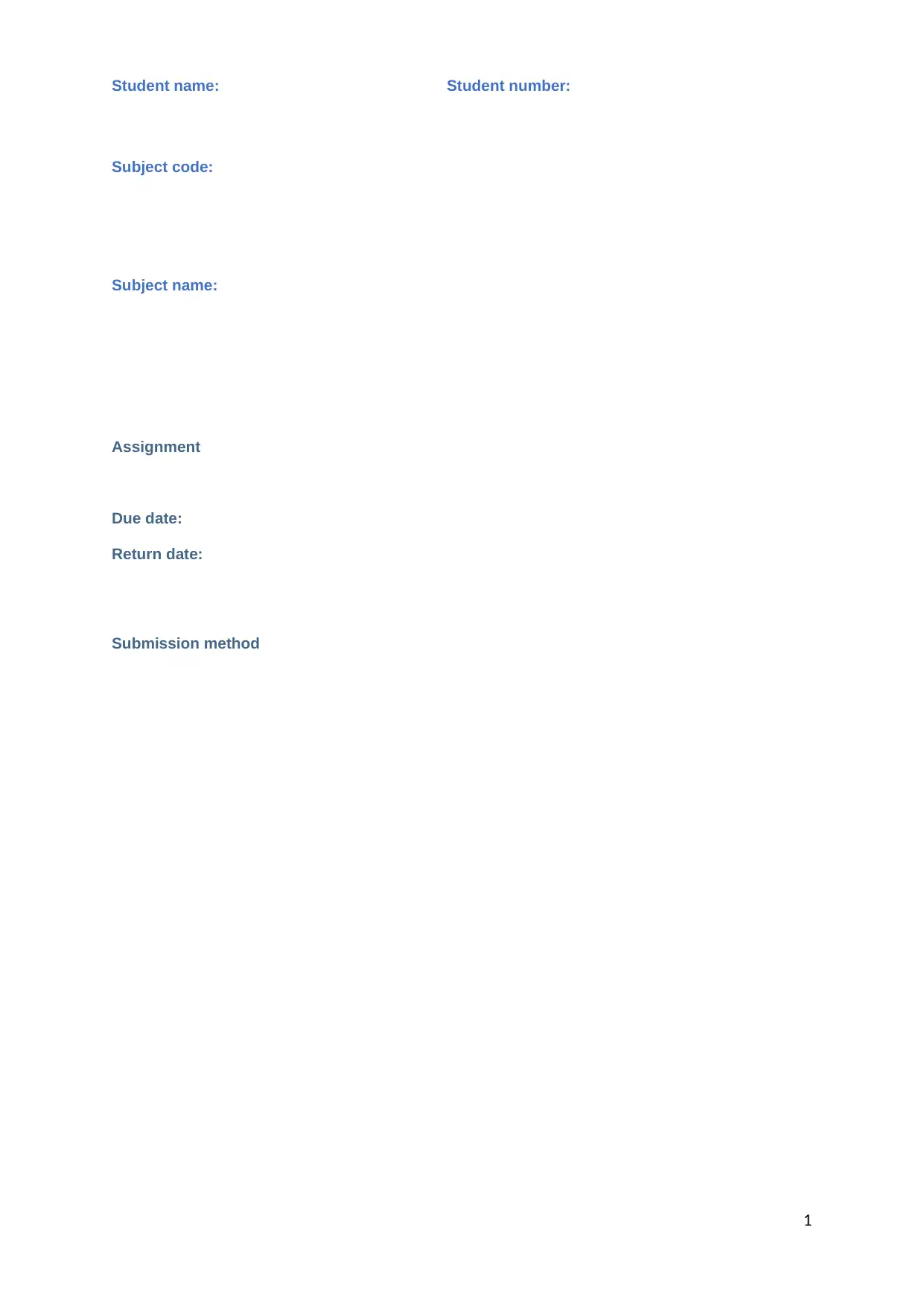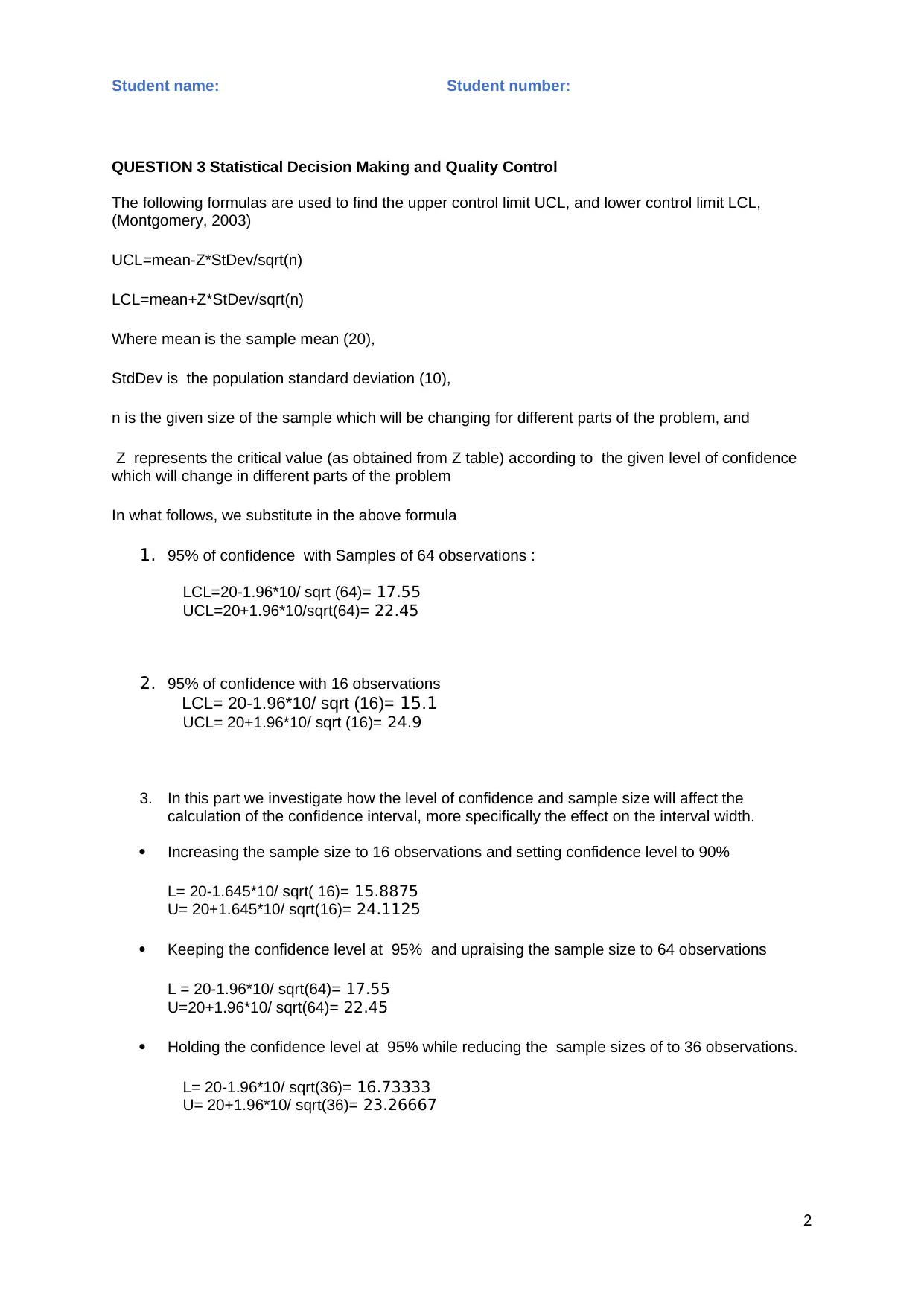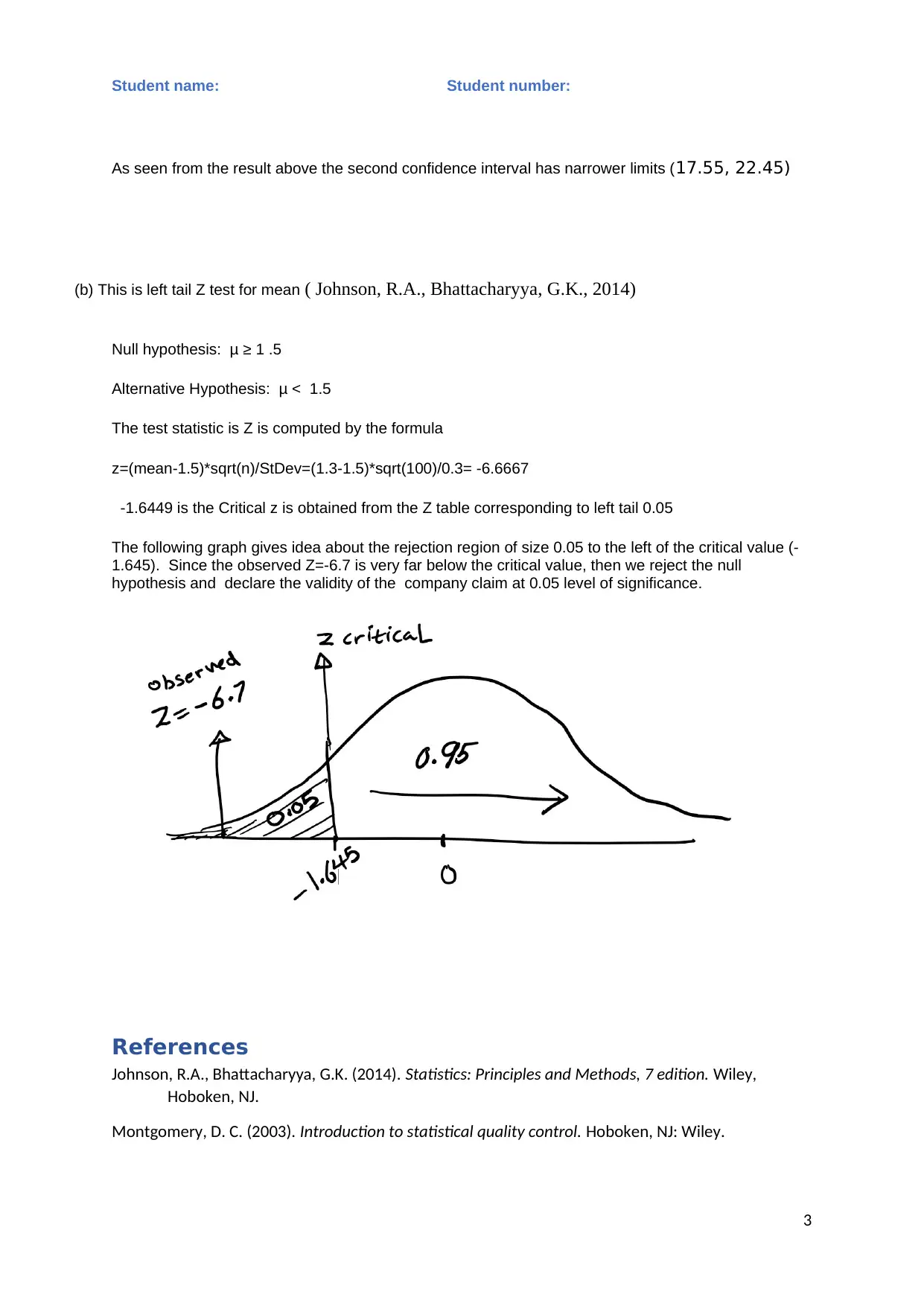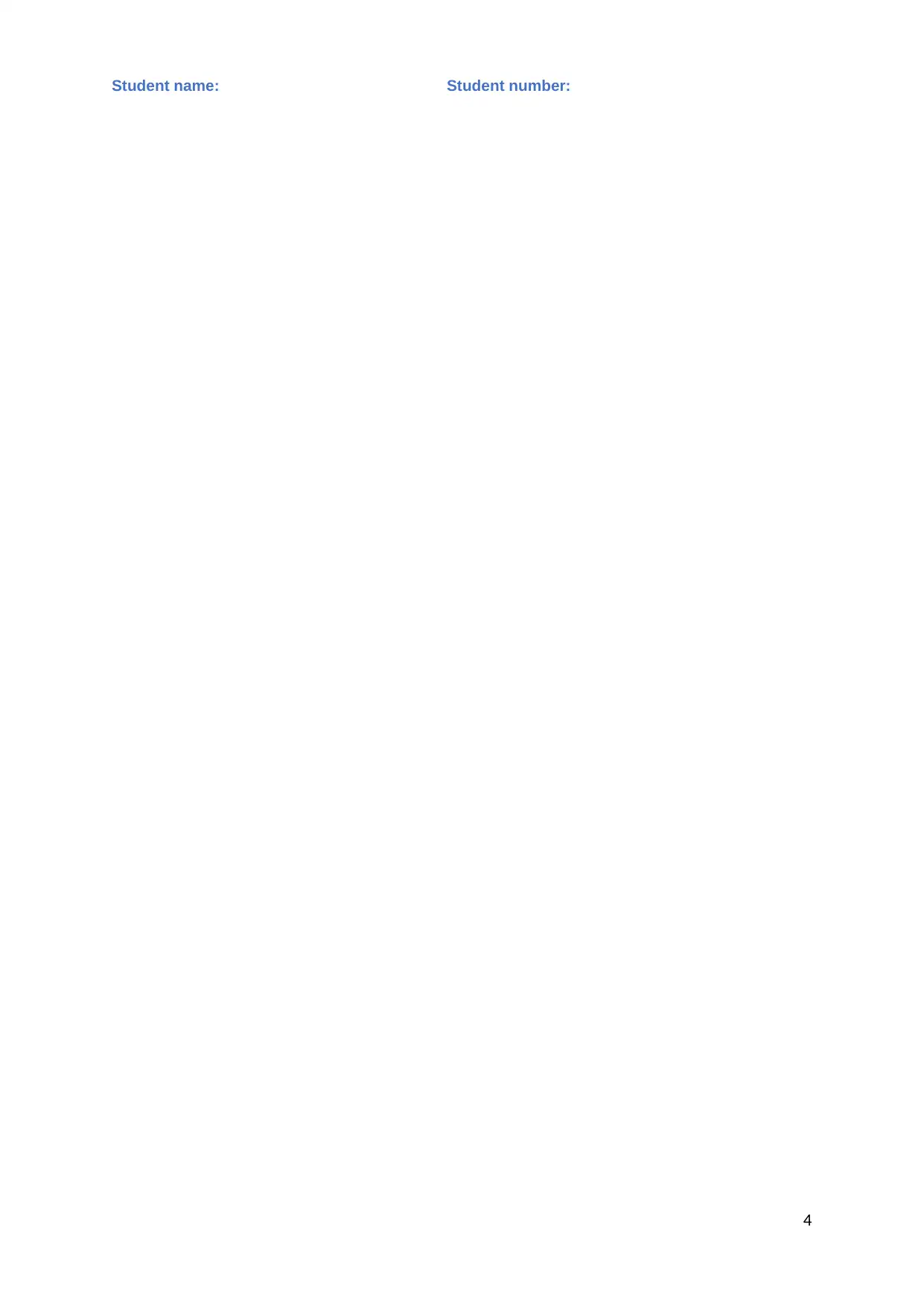Statistical Decision Making and Quality Control Homework Assignment
VerifiedAdded on 2020/03/04
|4
|510
|31
Homework Assignment
AI Summary
This assignment solution addresses statistical decision making and quality control, focusing on calculating control limits (UCL and LCL) based on sample size and confidence intervals. It explores the impact of different sample sizes and confidence levels on the width of the control limits. The solution includes calculations for various scenarios, comparing the effectiveness of different procedures to maintain control over labor time. Furthermore, the assignment covers hypothesis testing, including setting up null and alternative hypotheses and calculating the test statistic (Z-score) to validate a company's claim. The solution provides detailed steps and reasoning, making it a valuable resource for students studying statistical quality control and hypothesis testing.
1 out of 4







![[object Object]](/_next/static/media/star-bottom.7253800d.svg)